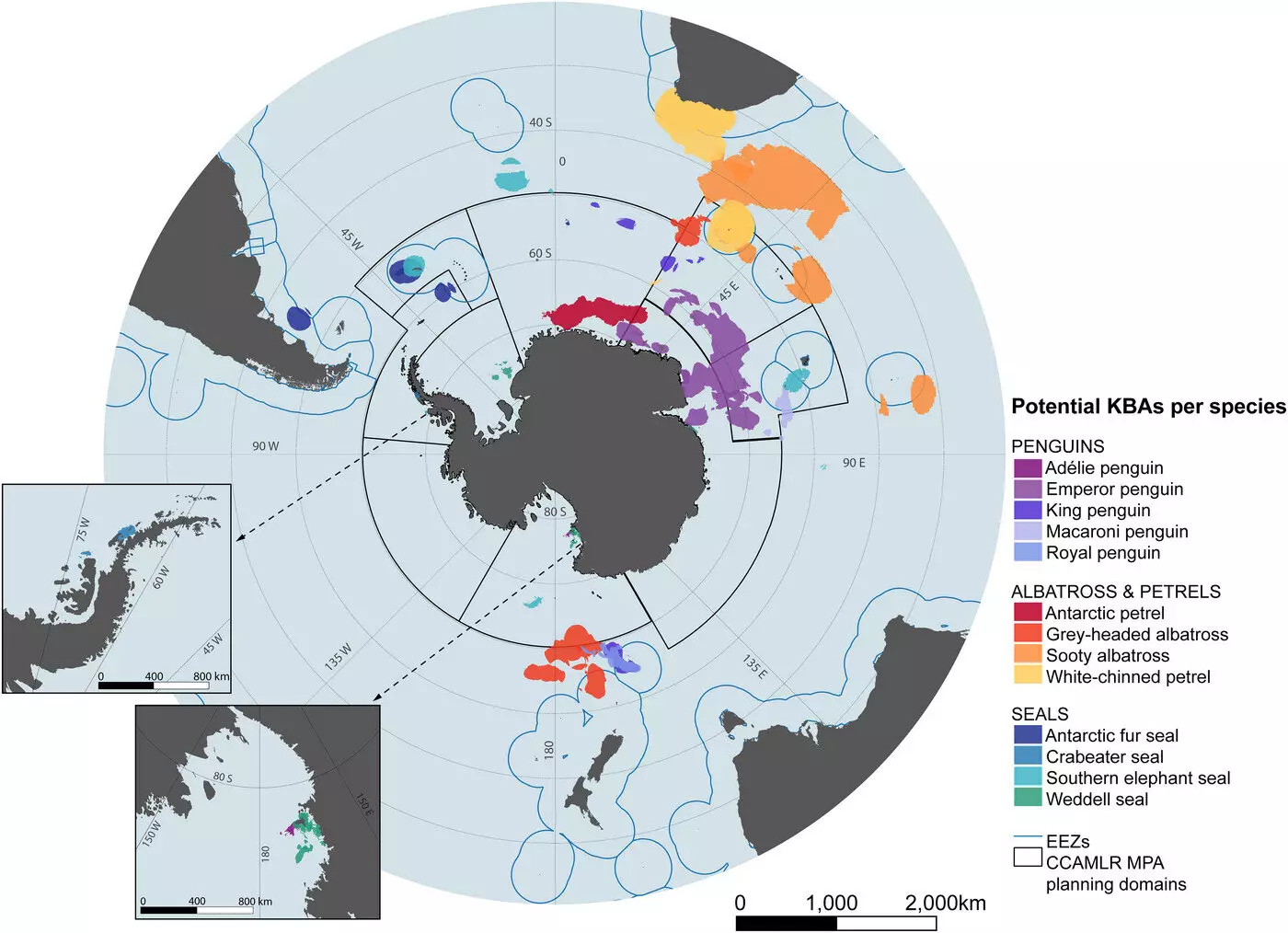A recent study conducted by a team of scientists from the University of Colorado Boulder has shed light on the importance of conserving biodiversity in the Southern Ocean surrounding Antarctica. This study, published in the journal Conservation Biology, identified 30 new areas crucial for protecting the native wildlife in the region. The lead researcher, Cassandra Brooks, emphasized the significance of these findings, highlighting the critical role that animals in the Southern Ocean play in the overall ecosystem of the planet.
The Southern Ocean is home to a variety of animals, including Adélie penguins, Weddell seals, and humpback whales. While the harsh conditions of the region, such as frigid temperatures and extensive sea ice, have historically provided some protection for biodiversity, human activities are now posing a threat to the native wildlife. Climate change, along with increased fishing and tourism, is leading to stress on the ecosystem and potential introduction of invasive species and diseases that could have devastating impacts on the vulnerable wildlife populations.
To address the need for conservation in the Southern Ocean, the research team focused on identifying Key Biodiversity Areas (KBAs) that are essential for the survival of various species in the region. By using existing tracking data for Antarctic and sub-Antarctic seabirds and seals, the researchers were able to pinpoint 30 critical sites where species rely on foraging, breeding, and migration activities. This approach allowed for a more tailored conservation strategy that takes into account the specific needs of individual populations, rather than grouping species together at a larger scale.
The study’s findings have significant implications for international conservation efforts and policy-making. By identifying these Key Biodiversity Areas, the researchers hope to influence decision-makers to implement restrictions on fishing and tourism activities in these critical zones. By reducing human interactions in these areas, the native wildlife will have a better chance of adapting to the challenges posed by climate change and other threats to their survival. The researchers stress the importance of considering these findings in future conservation strategies to ensure the long-term health and resilience of the Southern Ocean ecosystem.
The Southern Ocean plays a crucial role in mitigating the effects of climate change on a global scale. Its cold waters serve as a buffer for absorbing carbon dioxide emissions and excess heat generated by human activities. The protection of biodiversity in the Southern Ocean is not only essential for preserving unique species and ecosystems but also for maintaining the stability of Earth’s systems. As highlighted by the researchers, what happens in the Southern Ocean has far-reaching impacts that extend beyond the remote region of Antarctica.
The recent study on identifying Key Biodiversity Areas in the Southern Ocean underscores the urgency of protecting this vital ecosystem. By taking a tailored approach to conservation and considering the specific needs of individual species, we can ensure the long-term viability of the diverse wildlife populations in the region. It is imperative that international bodies and governments take action based on these findings to safeguard the Southern Ocean and its unique biodiversity for future generations.


Leave a Reply